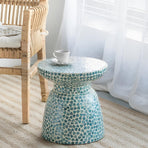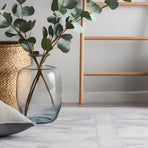
Create a Beautiful Home Without Overspending
Contents
Step 1: Set a Clear Budget
Step 2: List Your Must-Have Items
Step 3: Prioritize Your Splurges
Step 4: Be Flexible with Less Important Items
Step 5: Stick to Your Budget
Decorating your home can be exciting, but without a budget, it’s easy to make costly mistakes. You might find yourself unable to buy all the furniture you need, or your design might feel incomplete because you run out of money. That’s why setting a budget is so important—it helps you avoid spending too much on things you don’t really need or settling for lower-quality items. With these simple tips, you can save money for the things that really matter, like accessories, and still stay within your budget.
Step 1: Prioritize Your Design Goals
To create a realistic budget for your home, start by thinking about what’s most important to you. Spend a few minutes deciding which part of your home you want to start with and what you want to achieve in each room. This way, you can make sure your money is spent wisely and everything looks great together.
Ask yourself and write down:
- Which room will I start with? (Living room, bedroom, etc.)
- How much should I spend on this room while keeping some money left for the other rooms?
- What will I get out of decorating this room first? (Will it be more functional, provide more seating, or create a cozy space for family time?)

Step 2: List Your Must-Have Items
Once decided on the room you would like to start with, list 5 items in each category you would like to include in this project:
Furnishings- Do you need an L-shaped sofa for the living area or a four-poster bed for the bedroom?
Window treatment - Should you opt for custom blinds or simple curtains throughout the rooms?
Wall Covering- Do you need to repaint all the rooms, add wallpaper, or decorate with wall art?
Flooring - Do I want new flooring installed or add a stylish rug in each area?
Lighting -Should you upgrade with wall sconces, floor lamps, or table lamps?
Step 3: Prioritize Your Splurges
Strategic splurges can make your space look great without spending too much. For example, in a living room project, you can spend more on important pieces like an L-shaped sofa or accent chairs. These big pieces help set the style for the whole room. Spending a little extra on a comfortable, stylish sofa will make it the main focus of the room, and the right accent chairs can add style and comfort, making the space feel complete.
- Furnishings: Prioritize the sofa and accent chairs.
- Window Treatment: Custom blinds might be more expensive, but they add functionality and aesthetic value.
- Wall Coverings: Repainting is a basic necessity, but wall art adds personality to the space.
Step 4: Be Flexible with Less Important Items
You don’t need to buy everything at once. Start with a few key pieces and build from there over time. If you love something but it's a bit out of your budget, try searching for a more affordable alternative. Be flexible with things that aren’t as important, and don’t hesitate to mix new items with secondhand finds if you’re comfortable doing so.

Furnishings
These should take up a larger portion of your budget, as they are essential to the overall look and feel of your space. A quality sofa can become the centerpiece of your living room, and occasional chairs or side tables are the pieces that form the foundation of your space.

Window Treatment
When choosing curtains or blinds, you don’t need to splurge on custom pieces. There are plenty of budget-friendly window treatments to make a significant impact on the room's design. For a cohesive look, choose materials and colours that complement the rest of your space.

Wall Covering

Flooring
Flooring can be one of the more significant investments, but it's worth putting some budget into it since it sets the foundation for your room. If new floors are not in the budget, you can always start with stylish rugs to add warmth and texture to your space. Look for rugs that balance style and comfort, and choose warm tones or patterns that fit your aesthetic.

Lighting
Lighting makes a space feel more welcoming and cozy, and it’s an area where you can be creative without spending a fortune. Be creative with your lighting choices by using pendant lights, floor lamps, and table lamps to layer different lighting elements to create a warm, inviting ambiance.
Step 5: Stick to Your Budget
Sticking to a budget when you decorate on a budget doesn’t mean sacrificing style. Focus on your priorities and adapt where necessary. For instance, if you want a stylish sofa but can’t afford a high-end one, choose a more affordable one and allocate savings toward accessories like rugs, art, or lighting. By being smart and strategic, you’ll achieve a beautiful, functional home without overspending.


